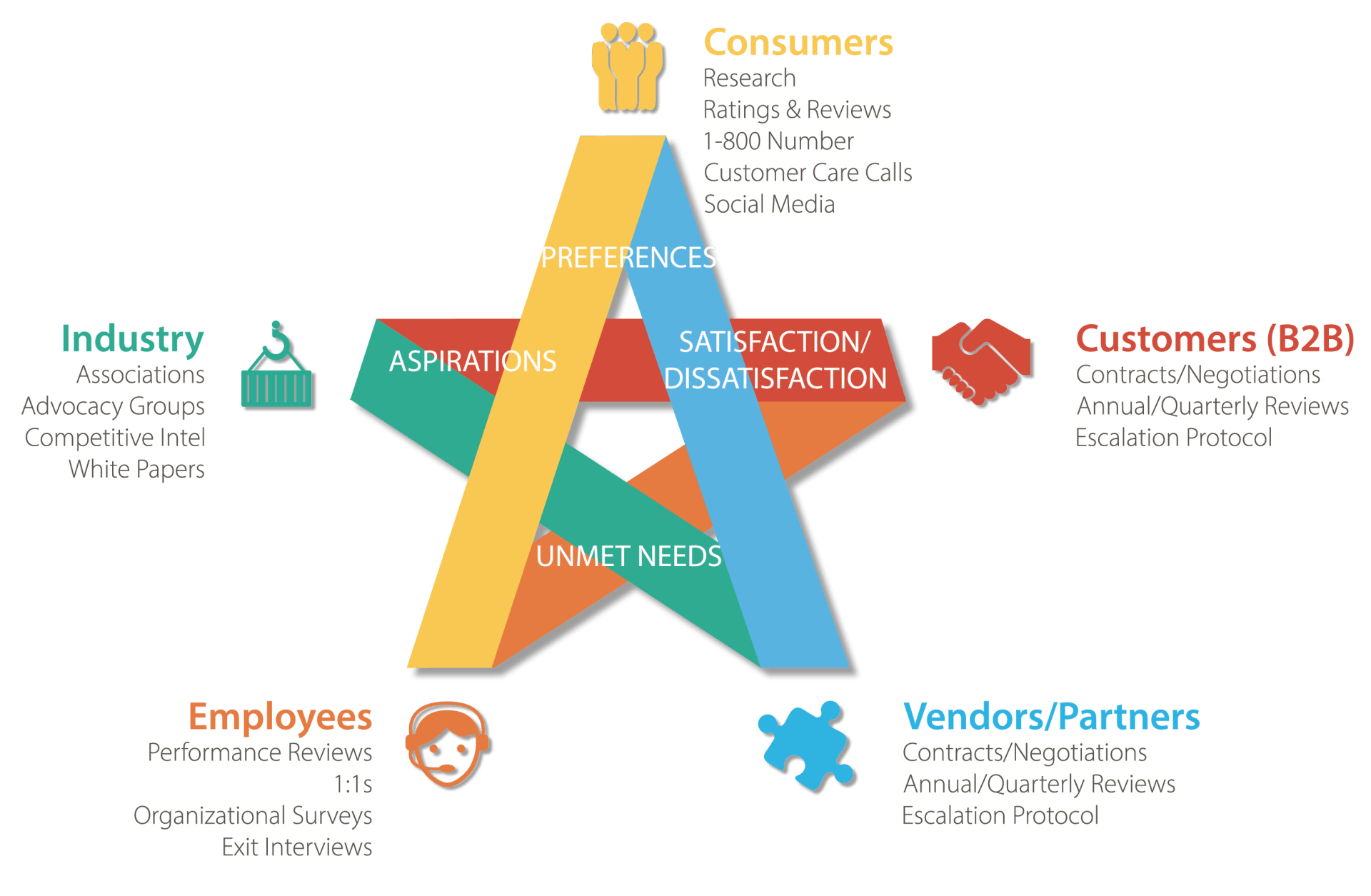This is part three of a four-part series on how to use your innovation toolkit to consistently win in business. Click here to read to part one. Click here to read part two.

What does it mean to listen?
Everyday communication involves both speaking and listening. Speaking allows you to get your message out to those around you. It’s an important aspect of any business. But so is listening—the ability to take notice of and act on what others say. While a business speaks with only one voice, they listen to many, and those many voices can be a crucial source of innovative and original thinking.
To peel back another layer, it’s important to distinguish between “listening” and “hearing.” Hearing is transactional and passive. When you “hear it through the grapevine,” you are happening upon a piece of information. By comparison, listening is active. It has the proper intention behind it. You aren’t waiting to be told something—you’re actively seeking the information.
And I would say listening is just like any other organizational behavior. It must be cultivated and embedded within the culture of your business as a continuous action practiced by everyone. Proper listening comes from having a proper listening culture, one that is defined by what everyone in the organization does every day.
Continuous listening then carries into a process of continuous learning that allows you to develop data-driven insights that inform your decision-making.
Better yet, building a proper listening culture becomes a source of competitive advantage. Great ideas can come from anyone, anywhere, and at any time. You are constantly tapped into one of your greatest sources of knowledge: every single person who is connected to your business, whether they are a consumer, customer, vendor or partner, employee, or competitor.
Constantly listening means that the insights generated within your company reach beyond the episodic and become systemic. It’s a self-iterative loop, where the more you listen, the more you know, and the more you know, the more you can engage with the various stakeholders of your business and be prepared to pivot and embrace change.
Listening helps identify change and form the basis of ideas that enable innovation. Just as important, listening also supports the way that changes or innovations are commercialized, brought to market, and orchestrated.
Now, you might be wondering: how does one listen?
As I mentioned earlier, there are several stakeholders you can and should listen to, including your consumers, customers, vendors, partners, employees, and competitors, and each stakeholder is engaged in specific ways.
For example, when it comes to the consumer, you can listen to them through coordinated research by taking note of the reviews of your products or services, or by monitoring your social media. Employees can be engaged through performance reviews, one on ones, exit interviews, and organizational surveys that ask questions about your company’s culture, values, team dynamics, and employee satisfaction.
Based on my experience, I’ve identified four key areas you should be listening for:
1) Preference
What is the product or service a customer prefers over another? How many days would your employees like to work from home versus the office? These types of questions allow you to gauge the proclivities of your stakeholders and re-align your focus when necessary.
2) Satisfaction
The second area to listen for is the satisfaction or dissatisfaction with your products, services, processes, or company culture, among others.
3) Needs
Building off the last two areas, you should be listening for the unmet needs of your stakeholders, whether they are found in an updated product or service, a flexible work schedule, a stream-lined process, or a completely new innovation.
4) Aspirations
Finally, you should be listening for the aspirations of your stakeholders. What are their hopes or ambitions for achieving certain goals? What role does your business play in that process? What could you be doing differently to support them?
If you don’t listen, you do so at your own peril. Many times, companies must resort to spending inordinate amounts of money on research to learn about their customers, employees, or industry when they could have been listening all along. You could be left playing catch-up, or worse, never learning the important lessons about your business or industry.
Reach out to me at svali@spyder.works if you’d like to talk more about how to develop a listening culture within your business to maximize your company’s potential for future growth.
Spyder Works – Small Steps. Epic Journey.


All Rights Reserved | Spyder Works Inc
